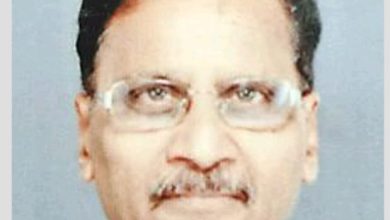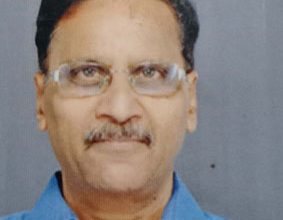Proper occupational safety and health measures boost productivity

Prof. Sunil Goyal
The World Day for Safety and Health at Work, also known as Occupational Health and Safety Day, is observed annually on April 28 to encourage the prevention of workplace accidents and diseases around the world.
The day aims to raise public awareness about work-related accidents and illnesses, highlighting the importance of promoting a safety and health culture to reduce workplace fatalities and injuries.
Occupational health is defined as the highest degree of physical, mental and social well-being of workers in all occupations. It is the branch of healthcare which deals with all aspects of health and safety at the workplace. It lays strong emphasis on the prevention of hazards at a primary level. Occupational health is essentially preventive medicine.
Consider the following facts from India
* Total population is 1.418 billion (2023)
* Gross national per capita income (PPP) is $7242
* Life expectancy at birth (Male/Female) is 69.16.3/71.8 years
* Probability of dying under the age of five (per 1000 live births) is 30.62
* Total expenditure on health per capita is $54.54 ; and total expenditure on health as a percentage of GDP is 2.1. Health, safety and well-being of the employees
Less than 10% of India’s 500 million workers are covered by health and safety legislation. Epidemiologists have estimated an annual 36,700 fatalities, 1,83,00,000 injuries and 18,50,000 diseases related to occupational hazard. Extensive literature review suggests access to occupational health services (OHS) is non-existent for a majority (85%) of Indian workers in unorganised sector. Of the global 1.9 million cases (17%) are contributed by India. The adverse occupational factors cost 2%–14% of the gross national product (GNP). Heavy burden and poor concern for OH disease is reflected in high attack rates foreg: Silicosis, 4.1%–54.6% among miners and Byssinosis, 28%–47% in textile workers.
There are presently 16 laws related to working hours, conditions at work and employment. There are two acts containing the main provisions for legal measures for the protection of health and safety of workers; they are the Factories Act (1948) and the Mines Act (1952). The Factories Act was amended in 1987 and stipulates pre-employment examination as a pre-placement procedure, statutory periodic medical examination for job in hazardous areas. In India, occupational health is under two ministries: 1) Labour and 2) Health and Family Welfare. The Ministry of Labour and the labour departments of the states and union territories are mainly responsible for health and safety of workers. The Ministry of Health and Family Welfare is responsible for providing health and medical care to workers through its facilities. The DGMS (Directorate General of Mines Safety) and the DGFASLI (Directorate General – Factory Advisory Services and Labour Institutes) assist the Ministry in technical aspects of occupational health and safety in mines, ports and factories respectively.
There are three articles for ensuring workers’ safety and health. Article 24 prohibits employment of children under the age of 14 years. Article 39 (e and f) states that the health of men, women and children should be protected, and children should be given opportunity and facility for healthy development and should be protected against exploitation. Article 42 states that humane conditions at work and maternity relief should be provided.
India has a huge abundance and variability among different occupations. Therefore, a standard policy framework regulating OHS is redundant. Additionally, there is no formal regulating body and lack of competence-based training and specialist registration. Except few public and private industries occupational safety is usually ignored. Occupational research remains neglected despite the ever-growing need for e.g: child labour, vast informal sector; industrial hygiene and OH surveillance.
It is highly pertinent to increase awareness of OSH through appropriate partnerships. The need for best OHS practices, coordinated research and optimal resource allocation to be highlighted through activism and advocacy. Setting up of national task force and a central regulating body is the need of hour.
(Author is an Eminent Social Scientist, Columnist, and presently posted as Dean and Chairman – Board of Studies at Dr. B. R. Ambedkar University of Social Sciences, Dr. Ambedkar Nagar (MHOW), Madhya Pradesh. Views are personal. Email: [email protected])
================






